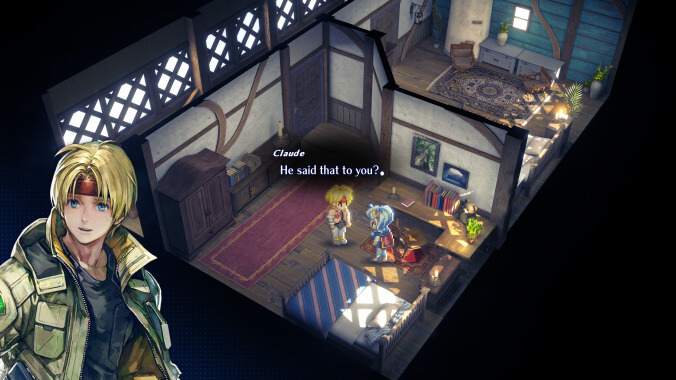Game Theory: Star Ocean: The Second Story R is a beautifully busted throwback
25 years later, the second Star Ocean game remains a wholly unbalanced RPG experience—and thank god for that

Every Friday, A.V. Club staffers kick off the weekend by taking a look at the world of gaming, diving in to the ideas that underpin the hobby we love with a bit of Game Theory. We’ll sound off in the space above, and invite you to respond down in the comments, telling us what you’re playing this weekend, and what theories it’s got you kicking around.
There’s a particular kind of artistic confidence—most especially visible in gaming, the medium that lets this sort of thing happen most readily—that can only really be exhibited by letting people trash your shit. It’s a bit like a clockmaker building a beautiful apparatus, and then hiding within it a whole bunch of tools that will let the public clog the gears, break the pendulum, and smash that damn cuckoo to pieces: If your thing (or game) is good enough, it’ll survive this process of being pushed to its limits, intact. If not, well… That’s confidence for ya.
Star Ocean: The Second Story R (see on Amazon), released last week by Square-Enix, isn’t just a throwback because it is, quite literally, a very faithful remake of a 25-year-old video game. It’s also a throwback because that specific game—released by the gorgeous weirdos at Japanese studio Tri-Ace, their first title to ever get a U.S. release—was and is one of the most beautifully breakable role-playing games ever made. Massively ahead of its time back in 1998 (and still kind of revolutionary now, honestly), The Second Story doesn’t just invite players to engage with its various systems—it encourages them to exploit them, rewarding experimentation with huge boosts in power that sometimes threaten to blow the game’s whole difficulty curve to shreds, because, well, why the hell not?
Even back in ’98, the plot of Star Ocean 2 was fairly minimal—basically, “What if a world-ending fantasy adventure and an episode of Star Trek were happening at the same time, in the same place?” Its combat was a revelation, though, one of the first Japanese role-playing games to incorporate serious action elements into the standard “tap the menu” fighting of their predecessors. (The other notable one of the era being Namco’s Tales Of Destiny; both games were follow-ups to Super Famicom titles that wouldn’t get a U.S. release for years to come, after these games paved the way.)
